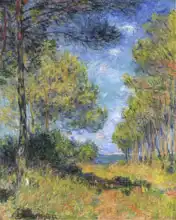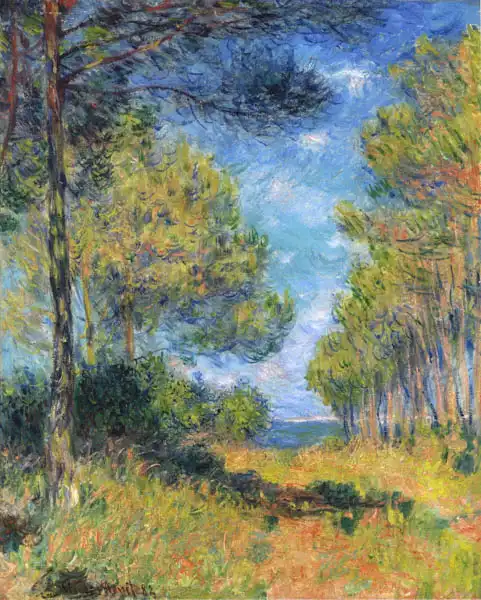Path at Varengeville
Date:
1882 Claude Monet painted a picture called "Way to Varenengeville" in 1882. This work is part of Monet's serial approach to painting, where he focused on a particular motif or scene and recorded its transformations in various light conditions or seasons.
The image captures
the landscape at Varenengeville, an area in the northwest of France near the sea. Monet was fascinated by the light and atmosphere of different places, and this may be reflected in its landscape. Monet, as one of the key characters of
Impressionism , is known for its unique style of painting. His brushes are often free and expressive, which contributes to the impression of spontaneity and capture the moment.
Monet often focused on light effects and how it changes during the day. In the picture of 1882, there could be warm shades showing the atmosphere of sunlight. Monet often included natural elements such as trees, flowers or paths, into their paintings. These elements can be important for the overall composition of the image. In
Monet often created a series of images with a similar motif to examine different aspects of light and space. "Way to Varenengeville" can be part of such a series.
Monet painted picture Path at Varengeville in 1882. Prevailing color of this fine art print is vivid and its shape is portrait. This image is printed on demand - you can choose material, size and finishing.
Claude Oscar Monet (1840-1926). A native Parisian, who thoroughly developed the idea of
Impressionism. Monet almost scientifically studied the effect of light on different objects. He devoted himself to so called transitory states, which quickly led him to work with colour and light, his paintings acting on the viewer from the first impression. His use of open-air painting and objects which were special only because of light opened the way for the beginnings of modern painting. Monet’s
Impression, Sunrise (1874) not only gave the name to the whole art movement, but secured Monet a place among the best painters of all times. At one time, he resided in London and created his famous study
Houses of Parliament (Monet wondered, How could the English painters paint Parliament when it cannot be seen for the fog?). In the
Giverny, which became his favourite retreat after the death of his wife, he painted motifs from his garden and the popular series
Water Lilies - the world of the water was as poetic and mysterious as a primordial paradise.


